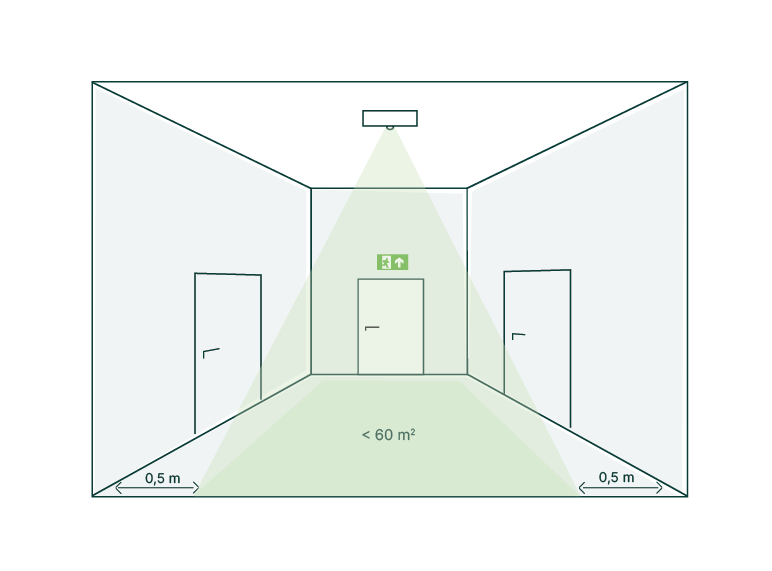The horizontal illuminance must not fall below 0.5 lx at the floor level of the empty core area which excludes a border of 0.5 m along the perimeter of the area.
- The minimum to maximum diversity ratio must not be less than 1:40 along the centre line of the escape route.
- The required minimum emergency lighting duration allowed for escape purposes is 1 hour.
- The open area lighting must reach 50% of the required illuminance within 5 seconds and 100% of the required illuminance within 60 seconds.
- Open area lighting is required in accessible toilets for people with disabilities.

High-risk task area lighting
The objective of high-risk task area lighting is to contribute to the safety of people involved in a potentially dangerous process or situation and to assist the proper shutdown procedures that need to be carried out for the safety of the occupants of the location.
For example: machines that are in motion during operation, audiences at sports events or shows, crowded places.
What’s most important – the emergency lighting in high-risk task areas is not meant to allow people to continue performing those high-risk tasks. It’s only supposed to allow them to shut down the necessary machinery and begin their evacuation, and it needs to work during the initial moments of the evacuation.
- The uniformity of the high-risk task area lighting illuminance must not reach a value below 0.1.
- The minimum emergency lighting backup duration must be equivalent to the period of time during which people are exposed to risk during an emergency. This time interval should be identified by the employer.
- High-risk task area lighting must provide the full required illuminance permanently or within 0.5 seconds, depending on the application.